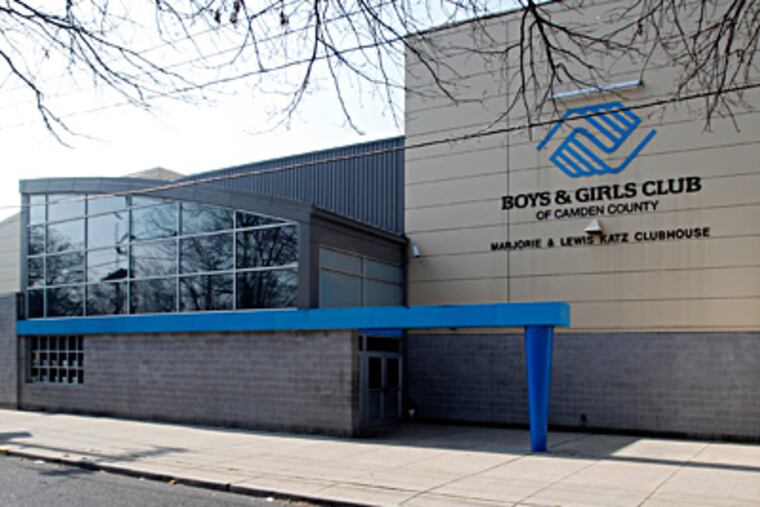Camden's use of state funds to help charter debated
As part of the $175 million state takeover fund given to Camden in 2002, $7 million was set aside for business lease grants to stimulate business growth throughout the city.

As part of the $175 million state takeover fund given to Camden in 2002, $7 million was set aside for business lease grants to stimulate business growth throughout the city.
So far, less than $3 million of the business grants has been spent, the most recent and largest chunk to date being $495,990 to the nonprofit support group for the Knowledge A to Z (KATZ) Academy Charter School.
On Thursday, state officials agreed to extend Camden's Business Incentive Grant Programs an additional year through Sept. 30, 2013, citing the program's success in bringing 576 jobs to the city and about $39 million in new rents over the next 10 years.
Some of those jobs and rents already have vanished. Of the 24 approved projects, at least three businesses have left the city. The remaining 21 are divided mostly between two waterfront buildings.
In the last two years, the city's local oversight board approved only one grant per year out of the $7 million.
'Our fair share'
In 2011, Catapult Learning, an education consulting firm at the Ferry Terminal Building on the waterfront, was awarded $205,125, spread over five years. This year, the KATZ charter school was the only project to be approved.
At least one Camden board member has questioned her peers' recent decisions to grant $500,000 to the KATZ charter.
"I feel like we haven't gotten our fair share" of housing and other neighborhood investments out of the $175 million, which is running dry, Camden resident Rosa Ramirez said. "They keep saying, 'We don't have money.' "
For medical reasons, Ramirez could not attend the summer meeting in which KATZ was approved for funding but said the decision to approve money for a charter school was "terrible."
"It's really expensive to open a school," said KATZ cofounder Marcella Dalsey, adding that the board looked at all funding options. The $500,000 over five years "just helps," Dalsey said Friday.
The Parkside Boys and Girls Club negotiated a utilities-included annual lease to house the KATZ charter school for $33,660, said Milford Liss, executive director of the Boys and Girls Clubs of Camden County.
One of the school's sponsors is Lewis Katz, a managing partner of the company that owns The Inquirer, who also is a key sponsor of the Boys and Girls Club.
The entire second floor of the building was retrofitted to make room for several classrooms, where 135 students are going to class. The charter school also is leasing space to accommodate 60 students at a former school in East Camden.
KATZ Charter receives at least $11,216 per student from state and district funds. While that money may not be used for construction costs, it can be used to pay rent, said Carlos Perez, chief executive officer of the New Jersey Charter Schools Association.
Some city and state officials say that financially helping a charter school is a good thing for the city.
"In addition to creating jobs . . . charter schools can bring a significant amount of other economic activity to communities," said state Economic Development Association spokeswoman Erin Gold.
The KATZ charter school has 27 employees, of which three are Camden residents.
Another board member and Camden resident, Rodney Sadler, said last week that he couldn't remember the justification provided for helping subsidize the charter school's rent during the next five years.
"It was something we were ordained to do with the money," Sadler said.
The Municipal Rehabilitation and Recovery Act of 2002 authorized the issuance of up to $175 million in bonds for economic-development projects in Camden. The money was split into four categories: residential neighborhood improvement; demolition and redevelopment financing; downtown revitalization; and higher-education and regional health-care development.
On the waterfront
Many of the grants went to waterfront projects, such as Adventure Aquarium and Campbell's Field, and to office buildings and the medical and higher-education anchor institutions.
In 2005, $16 million was pulled from the demolition and redevelopment financing fund to support a pilot program meant to stimulate commercial, industrial, and retail business throughout the city. The funding for the pilot program was later reduced to $7.5 million, of which $7 million was to go toward subsidized leases for new businesses or existing businesses that wanted to expand. The program now has the largest chunk of money - $4.1 million - from the total remaining $10 million.
Still available
Even though the city regained local control in 2010, the recovery money is still available for use. The board meets quarterly to decide on funding for city projects.
When asked about the other business lease projects approved, such as three different leases for Cooper Health System and two Drexel University-affiliated research centers, board member Sadler said: "It was more about promoting the eds and meds."
at 856-779-3917, cvargas@phillynews.com,
or follow on Twitter @InqCVargas. Read her blog, "Camden Flow," on www.philly.com/camden_flow.